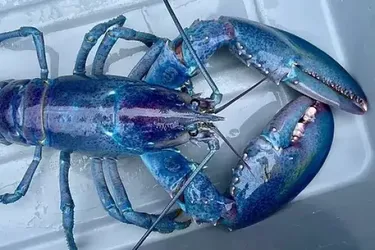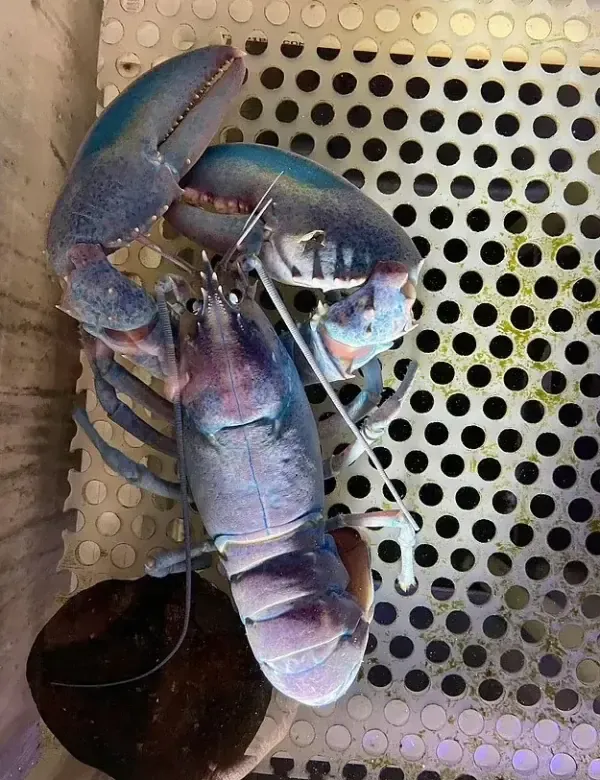Catch of the Century: an extremely rare lobster found off the coast of Britain, which occurs once in 100 million (photo)

The ocean covers more than half of the Earth's surface and is home to numerous animals. Some of them are so rare that they can be seen only once in 100 million.
One of these unique creatures is the "cotton candy lobster", which a fisherman accidentally caught off the coast of New Hampshire. This was reported by the Daily Mail.
Joseph Kramer, 25, said that he had set about twenty traps, and in one of them he was waiting for a surprise - a blue-pink-purple lobster known as the "cotton candy lobster". Due to the incredible rarity of this color, the fisherman was extremely impressed with his find.
The researchers note that the bright rainbow color of this crustacean is likely the result of a genetic mutation or depends on its diet. However, this color makes the lobster an easy target for predators.
To avoid the lobster becoming prey or dying, Joseph Kramer handed it over to the non-profit organization Seacoast Science Center, where the crustacean can safely continue its life. The fisherman emphasized that finding such a rare creature is a real lucky thing that happens "once in a lifetime."
Initially, the fishermen thought they had caught another rare lobster with a mutation that occurs only once in 2 million, but the Seacoast Science Center found out that this finding was even more unusual. It turned out that the fishermen were lucky enough to catch a lobster with shades of lavender, purple and pink, which puts it in the category of "cotton candy."
Lobsters have layers of carotenoid pigments consisting of red, yellow, and blue colors. They are produced by plants and algae, which gives the crustacean a variety of shades that make it look brown to the human eye.

Sometimes pigments in crustaceans can be over- or underdeveloped, resulting in different types of coloration. Studies show that red lobsters occur in one in ten cases, bicolored lobsters once in 50 million, and albinos once in 100 million.
Crustaceans are known to get these pigments from an antioxidant called astaxanthin, which is a type of red dye. When it mixes with carotenoids, it gives a typical brown hue. That's why lobsters turn red during cooking, as heat releases antioxidant compounds.
Read also: Scientists told which creatures are considered the smartest on Earth
"Cotton candy lobster" has a peculiar color due to very low levels of astaxanthin. This can be caused by a genetic mutation or a different diet, for example, the lobster may eat crabs and shrimp that are not typical for it.
If the cause of the coloration lies in a mutation, it is not surprising, scientists say. Genetic mutations can lead to different colors on animal shells, making them more vulnerable to predators.
Earlier we told you that Britain is being attacked by giant spiders the size of rats.
If you want to get the latest news about the war and events in Ukraine, subscribe to our Telegram channel!
